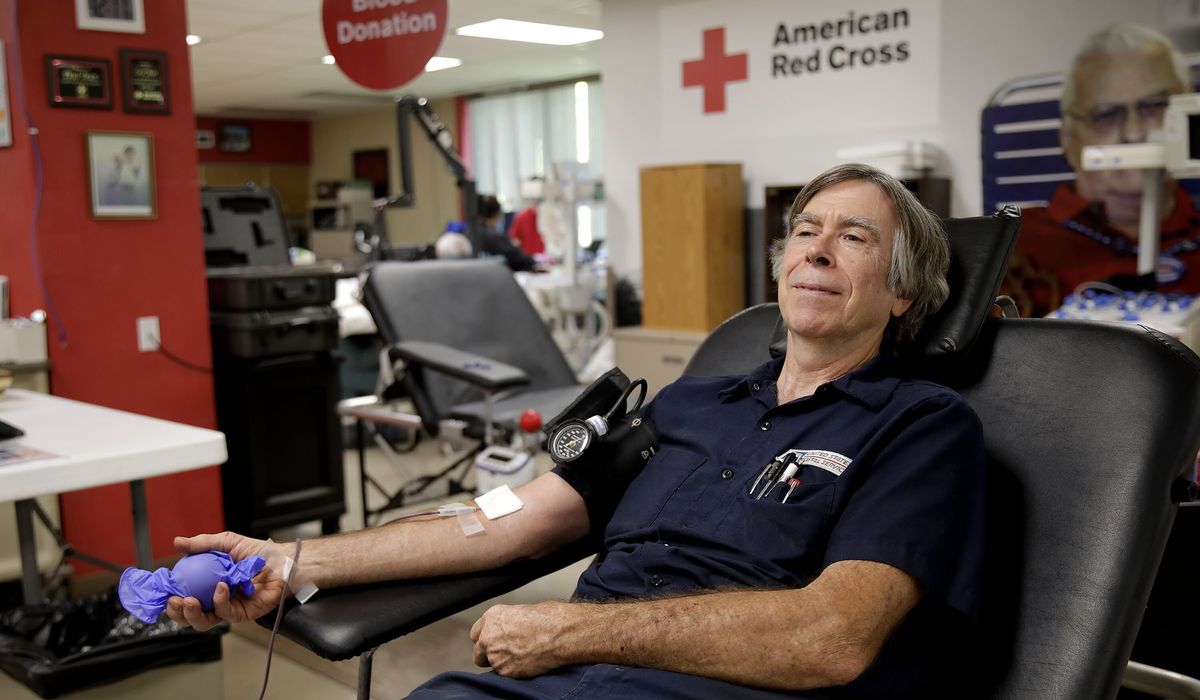
U.S. blood centers and hospitals are grappling with a blood supply shortage amid a rising number of trauma cases, organ transplants and surgeries requiring transfusions.
Experts say summer is already a challenging time for blood collections since school-based drives are not happening and many people are away from work and home. However, this year is particularly challenging since many blood drives are still canceled and more patients are receiving treatments that might require a blood transfusion, said Dr. Claudia S. Cohn, chief medical officer for AABB, formerly known as the American Association of Blood Banks.
On top of that, patients are scheduling appointments that were postponed during the pandemic, adding to the growing demand for blood.
“There have been challenges with the blood supply throughout the pandemic. The issue now is that the need for blood is increasing while the supply has not kept up,” said Dr. Cohn, who is also the associate director of clinical laboratories at the University of Minnesota. “The majority of blood centers are now reporting a one-day supply or less of blood, far below the levels for which they normally strive. Some blood collections facilities have reported declines by as much as 50% below normal levels.
“From a personal experience, as someone who has worked in the transfusion medicine field for many years, the current situation with the blood supply is the most concerning I have seen in my career,” she added.
Blood inventories are at their lowest since the beginning of the pandemic with community blood centers currently experiencing a 5% to 15% increase in demand from historical averages, according to Kate Fry-Cicero, chief executive officer of America’s Blood Centers.
As people travel again, there is also an increase in incidents such as car accidents where a single patient requiring a lot of blood can often exhaust the entire blood supply in a local area, the chief executive officer added.
“Blood centers nationwide are facing a unique and concerning set of challenges this summer that have resulted in a critically low inventory of blood available for patients in need,” said Ms. Fry-Cicero. “Every three seconds someone needs blood, and because it can take 24-36 hours to process and test a unit of blood after donation, it is vital that blood centers maintain at all times enough inventory to respond to any routine or emergency need.”
Blood centers try to keep at least three days’ worth of blood supply on their shelves or ideally, five days’ worth of supply. Yet, they are seeing less than two days’ supply for certain blood types, said Ms. Fry-Cicero. She added she expects to see a high need for blood donors to last throughout the summer.
The American Red Cross earlier in June urged people to donate blood, citing a severe blood shortage it is currently experiencing. Chris Hrouda, president of Red Cross Biomedical Services, said the organization has distributed about 75,000 more blood products than anticipated over the past three months to meet the “extraordinary blood needs” of hospitals and patients, but “we can’t do it without donors.”
Red cell demand from hospitals with trauma centers climbed by 10% this year compared to 2019, a growth more than five times of other facilities that provide transfusions, the Red Cross said.
Massive hemorrhaging is involved in 20% to 40% of trauma deaths that happen after hospital admission, according to the Red Cross. Doctors might need hundreds of blood products to try to save a life in these circumstances.
In Silver Spring, Maryland, Holy Cross Health is back to pre-pandemic levels of emergency and surgical care and similar blood supply use, said spokesperson Samantha Thompson. She added the number of procedures varies on a daily and weekly basis and is at times higher than pre-pandemic levels.
“Holy Cross Health is aware of the blood shortage and [is] working with the American Red Cross and our supply chain to ensure that we have adequate supplies. We are also working with our local Red Cross chapter to host an upcoming blood drive event. This event will take place in the same setting as our previous vaccination clinics, so our community should feel safe as they support this life-saving act of donating blood,” Ms. Thompson said.
In response to the unstable blood supply, some hospitals are reportedly slowing down the pace of elective surgeries and delaying patient care. When hospitals are short on blood supply, they might give less blood to a patient than they normally do. Also, a patient who requires regular transfusions for a health condition such as sickle cell disease might be asked to undergo treatments less often, Dr. Cohn added.
Those who wish to donate blood can use the Red Cross Blood Donor App, visit RedCrossBlood.org or call 1-800-RED CROSS (1-800-733-2767). They can also visit AABB‘s website, www.aabb.org/giveblood, and use the blood donation site locator to make an appointment. A local center might prefer donors to schedule an appointment for a time in the next few weeks.
“A blood donation in four weeks is just as critical and life-saving as one now,” Dr. Cohn said. “We have a long summer ahead of us and making sure the blood supply is adequate beyond this week or next is also part of the challenge.”
Health, The New York Today




